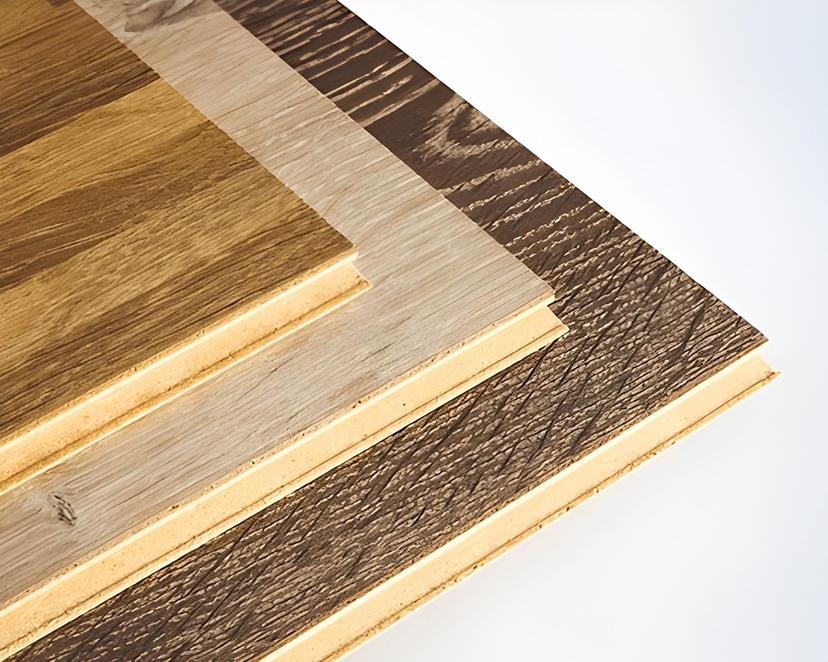
Types of Blockboard Thickness available in India

October 25, 2025
Blockboard is one of the most commonly used materials for making furniture and interior design purposes. Its lightweight structure, durability, and cost-effectiveness make it suitable for wardrobes, cabinets, doors, tables, and more. When choosing the right thickness, it is also important to understand the Types of Blockboard available in the market, as each type offers different strength levels and performance based on usage. One of the critical aspects to consider when selecting blockboard thickness is how strong and practical the material will be for your specific project. This article will discuss the available types of blockboard thickness in India, how they are used, and the key factors to consider before selection.
What is Blockboard?
Before discussing the various thicknesses of a blockboard, it is important to first understand what a blockboard is. Essentially, a blockboard consists of a core of wooden strips normally made of softwood or pine that are glued between two layers of veneer. Due to this construction makeup, blockboard is stronger than the same thickness of plywood and resists warping much better.
Blockboards are a preferred material where large panels are utilized without the fear of bending or twisting. How well a blockboard performs in your application or the degree of practical use will be very dependent on its thickness of block board and its ability to withstand load and its overall durability.
Common Types of Blockboard Thicknesses
Blockboards can be made in a variety of blockboard thickness to suit the needs of furniture and interior selections. The typical blockboard thicknesses available in India are listed below:
12mm Blockboard
The 12mm blockboard is one of the thinner choices available and is perfect for smaller furniture applications. The weight of a 12mm blockboard makes it easy to handle and use. Standard scenarios for using grade-12 blockboards are drawer bottoms, cabinet backs, or decorative panels; we say standard because a thickness of this type is lighter and easier to work with but has a limited strength and therefore cannot be considered for use in load-bearing furniture.
18mm Blockboard
18mm blockboard is the standard in most furniture applications; this thickness offers an excellent balance between strength and usability. Furniture manufactured with this thickness will be suitable for wardrobe panels, kitchen cabinets, table tops, shelving, etc. It is not so thick that it is unmanageable to cut and install, but it is thick enough to handle medium loads without warping.
19mm Blockboard
The 19mm blockboard is slightly thicker than the 18mm and thus offers strength and rigidity. The thickness of this block board is suitable for heavy furniture items such as wardrobes, office desks, and partitions whilst maintaining a long-lasting structure and providing minimal bending; such characteristics make 19mm block boards appealing for up-market furniture projects.
25mm Blockboard
For extremely heavy-duty applications, a 25mm block board is often specified. This thickness offers maximum durability and resistance to bending. These boards are often used for doors, large table tops, and structural furniture needing to support significant weight. The thickness offers additional weight and therefore, is heavier or more cumbersome to handle and install, but it provides enough strength to account for high loads.
30mm Blockboard
In India, the 30mm blockboard has the highest thickness commercially. It has the highest load capacity of any size, and is commonly specified for industrial furniture, heavy-duty door panels, or commercial bulkhead partitions. Although heavy, it provides great durability and stability when the desire is to have the maximum structural integrity and dimension stability for a project.
Factors Affecting Blockboard Thickness
Choosing the correct blockboard thickness is important to make sure it achieves the desired expectations of load performance, be it furniture or interior commitment. Below is just a couple of thoughts you should think about:
Load-Bearing Requirements
Blockboard thickness should be based on the weight to support. For lightweight panels / decorative items - typical sheets of 12mm, 18mm will be ample (for heavier items - wardrobes, doors and tables - use 19mm, 25mm or 30mm blockboard - for reduced risk of warping or sagging.
Type of Furniture
The block board thickness you're going to need will also depend on the type of furniture you're using it for. For example, cabinets and partitions are often designed using an 18mm block board, whereas a dining table, office desk, or large shelf may use a thicker 25mm block board. Selecting the correct thickness of block boards will create a more stable and durable piece of furniture.
Design and Aesthetics
Using thicker blockboards creates a more premium 'look' and can add to the overall feel of high-end furniture. Conversely, thinner boards can be used for more lightweight or temporary furniture when looks are secondary to the functional use of the furniture. The thickness of a block board should always have a balance between design and functionality in mind.
Costs
Naturally, blockboards that are higher in thickness will be more expensive due to the amount of wood being used. Transporting and installing thicker boards is more intensive than it is for thinner boards. Thus, it is important to balance costs and durability for larger projects.
Surface Finish
The thickness of a blockboard plays a role in the surface finish options. Thicker boards typically hold laminates, veneers, or paints more securely and are less likely to warp over time. Thinner blockboards more frequently require some additional support before finishing to ensure longevity.
Common Uses of Blockboard Thickness
In India, here is a useful guide for what blockboard thickness option is traditionally used for different applications:
12mm Blockboard
Great for drawer bottoms, cabinet backs, and decorative panels.
18mm Blockboard
Used for standard furniture panel products, wardrobes, shelving, and kitchen cabinets.
19mm Blockboard
Used for wardrobes, office desks, partitioning, and heavy shelving.
25mm Blockboard
Common in doors, large table tops, and structural furniture needing heavy support.
30mm Blockboard
Think industrial furniture, commercial partitioning, or high-load applications.
Benefits of Choosing the Right Blockboard Thickness
Selecting the right thickness of block board has several advantages:
Durability
A thick blockboard will provide a stronger product that will not bend and warp over time.
Ease of Installation
Choosing the right thickness of block board will make the furniture easier to handle and assemble.
Load Capacity
The correct thickness of block board also guarantees the furniture will support the weight as intended.
Better Aesthetic
Thicker block board has a solid look and is more premium, lending itself to modern and luxury styles to the interior.
Cost-Effectiveness
Making sure you selected the correct thickness of block board before purchasing will decrease material overuse and waste, thus saving you money.
Maintenance Tips for Your Blockboard Furniture
Even the best thickness of the blockboard will require some upkeep for continued performance over time: Do not expose blockboards to excessive moisture; this will weaken the core strips.
-
A dry cloth or slightly damp cloth will remove dust frequently; so long as it’s not soaking, it will be fine.
-
Use coasters and mats to reduce scratching and watermarks on table tops.
-
Thinner blockboards will require work such as laminating or varnishing to improve durability.
-
Even a thicker blockboard will need supportive tools to prevent sagging of shelves and table tops.
Conclusion
In India, there is a large range of blockboard thickness available to choose from 12mm–30mm. Each thickness is more suitable for specific applications in furniture. To maximize durability, function, and aesthetics of the piece, it is important to understand the thickness of the blockboard you will be using. The thinner blockboards are better for light furniture or decorative panels; larger options are more suited for heavy-duty applications such as wardrobes, doors, and industrial projects.
By choosing the correct thickness of blockboard and design thickness of the blockboard, you are set to have long-lasting, stable, and visually pleasing furniture. It is always recommended to consider all the load-bearing capacities of your furniture, design, cost, and surface finish when making a selection. When selecting the right blockboard, you can be assured that your furniture will maintain both superior strength and style in its use.
Related Blogs
The Process of Manufacturing Blockboard
Major Differences Between Blockboard and MDF
Pine Block Board: A Versatile Material for Interior Design
What are the Major Differences between Block board and Plywood
Understanding the Differences Between Pine Blockboard and Other Blockboards
Difference Between Calibrated Hardwood Blockboard and Regular Blockboard
